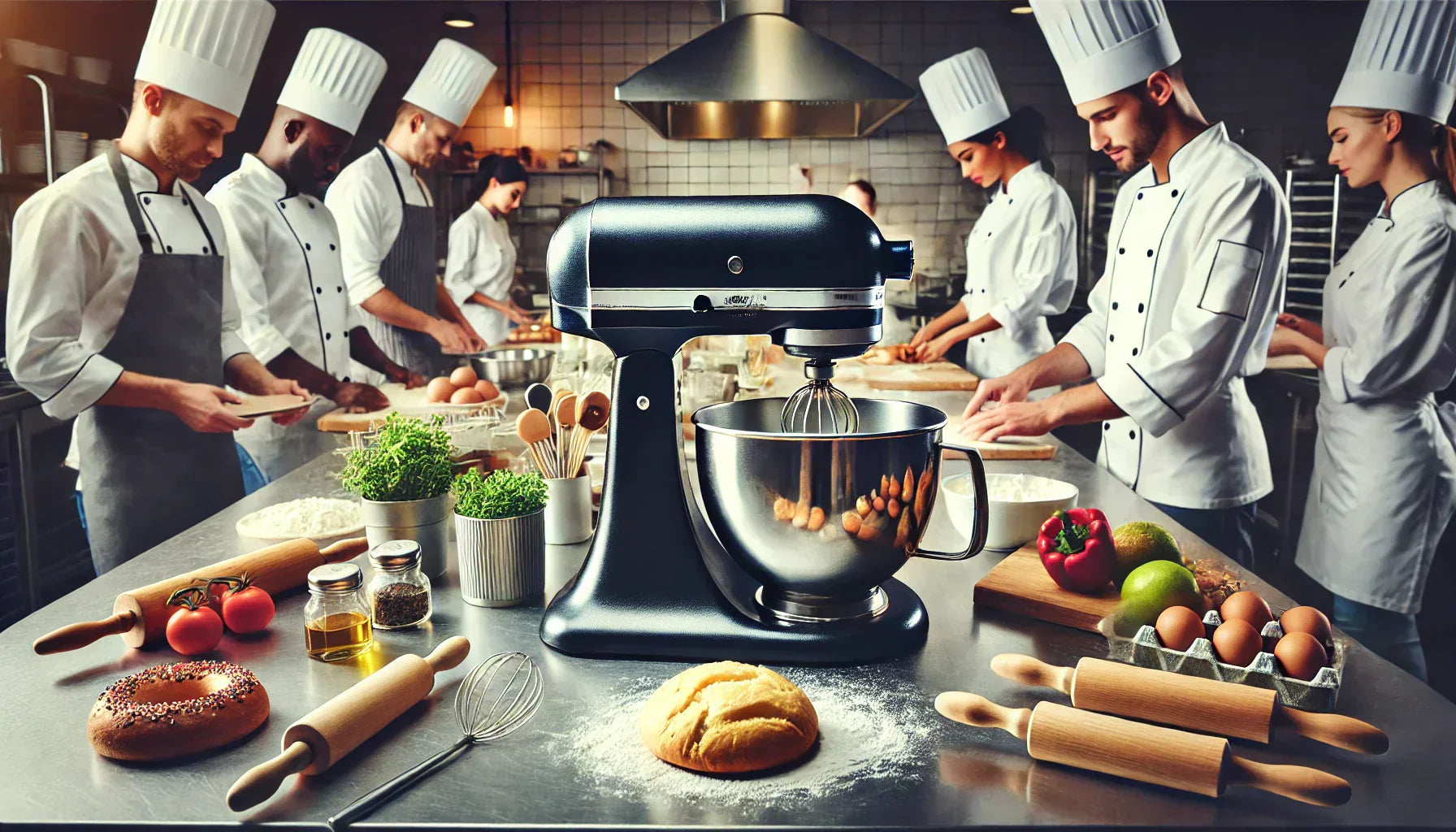
Can a Stand Mixer Knead Dough? The Answer Revealed
Ever tried kneading dough by hand and felt like you just finished an arm workout? Short answer: Yes, a stand mixer can replace kneading! It saves time, effort, and handles tough dough effortlessly. But is it always better? Keep reading—your bread, arms, and commercial mixer await!
Stand Mixers and Dough Kneading
Kneading dough is what gives bread its structure and texture, but does that mean you have to do it by hand? Not necessarily. A stand mixer can take over the heavy lifting, making the process faster and easier. It’s like having an extra set of hands in the kitchen—only these hands never get tired.
How Stand Mixers Knead Dough
Stand mixers use a dough hook to mimic the rhythmic push and pull of hand kneading. The hook stretches and folds the dough, helping gluten develop properly. Unlike kneading by hand, which relies on muscle and technique, a stand mixer provides steady, consistent movement. That means no sore arms and no guesswork. Just set the timer, let it run, and watch your dough transform.
Effectiveness for Different Dough Types
Not all doughs behave the same way, and that’s something to keep in mind when using a stand mixer.
-
Bread dough comes together beautifully, making light, airy loaves with minimal effort.
-
Pizza dough gets the elasticity it needs for a perfect, chewy crust.
-
Pastry dough stays tender since the mixer prevents overworking.
-
Dense whole grain doughs might need more power—some mixers struggle with the weight of heavier flours.
For most types of dough, a stand mixer does the job well, but stiffer doughs may need a little extra attention.

Stand Mixer Kneading vs. Hand Kneading
There’s something satisfying about kneading dough by hand. But is it necessary? That depends on what you're looking for.
Advantages of Stand Mixer Kneading
-
Saves time—mixing and kneading are done in minutes, not by hand over a floured counter.
-
Requires less effort—no need to work up a sweat pushing and folding dough.
-
Delivers consistent results—every batch gets the same treatment, reducing the risk of under- or over-kneading.
-
Handles large batches with ease—especially if you have a commercial mixer.
Advantages of Hand Kneading
-
Gives better control—you can feel the dough’s texture and adjust as needed.
-
Prevents over-kneading—machines can sometimes go too far, making dough too tight.
-
Offers a more traditional, hands-on experience—many bakers love the process.
-
Doesn’t require extra equipment—no need for a bulky appliance on the counter.
Factors Affecting Stand Mixer Kneading Performance
Not all stand mixers are created equal. If you’re planning to use one for kneading, certain features make a big difference.
Motor Power and Design
-
A higher-wattage motor handles tougher doughs better without overheating.
-
Bowl capacity matters—larger bowls mean bigger batches, but they need strong motors to match.
-
Some stand mixers, especially commercial models, are built for frequent kneading, while others are better suited for lighter baking.
Dough Hook Design
-
Spiral dough hooks knead more efficiently, reducing stress on the motor.
-
C-shaped dough hooks work fine but may require stopping and scraping.
-
Some high-end mixers have double hooks for even better dough handling.
Choosing the right mixer makes a huge difference in performance and longevity.

When Hand Kneading Might Be Preferred
Despite the convenience of stand mixers, there are times when rolling up your sleeves and kneading by hand makes more sense.
-
Small batches come together faster with just a bowl and your hands.
-
Delicate doughs, like brioche or enriched breads, benefit from a gentler, controlled touch.
-
Some bakers enjoy the experience—kneading can be meditative, almost like a workout for the soul.
-
Over-kneading risks are lower since you control every fold and press.
For those who bake occasionally or love the tactile feel of working dough, hand kneading is a rewarding choice.
Conclusion: Stand Mixers as Kneading Alternatives
A stand mixer can absolutely replace hand kneading for most recipes, saving time and effort while ensuring consistency. That said, traditional kneading has its own charm and advantages. Whether you rely on a mixer or stick with hand kneading depends on your baking style and what feels right for you. Either way, the key is understanding the dough and knowing when to let the machine take over—or when to trust your own hands. The best method? The one that helps you create the perfect loaf, every time.
You may also like:
Baking Without a Mixer: Is It Possible?
Cake Mixing: Hand vs. Mixer - Which is Best?
Spiral Mixers for Cookie Dough: What You Need to Know
Unlock Culinary Possibilities with a Commercial Mixer
Uncovering the Pros and Cons of Stand Mixers in Canada
Is a Stand Mixer Better Than a Food Processor for Pie Crust?
Spiral Mixer vs Stand Mixer: Key Differences Explained

